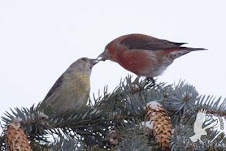Manitoba Breeding Bird Atlas - Launch and Free Public Workshop:
Location:
FortWhyte Alive, Winnipeg
Dates and Times:
Friday 9th April 7pm – 9pm
Saturday 10th Apri1 10am – 4pm
Sunday 11th April 10am – 4pm
SCHEDULE:
Friday April 9th 7pm – 9pm
Reception with the Minister of Conservation, Silent Auction and "meet the owl" with Nemo, Pepper and their favourite perch, Jim Duncan.
Saturday April 10th 10am - 4pm
All day registration available. View our maps and maybe select an atlas square or meet your regional coordinator
10:00am: Atlassing Presentation: Learn about breeding bird atlases –their history and their purpose and how you can get involved
11:00am: Enjoy the photography and stories of naturalist, photographer and author Bob Taylor as he showcases beautiful Manitoba
2:00pm: An outdoor workshop on how to atlas for birds – bring your binoculars and a pencil and clipboard!
3:00pm: An outdoor workshop on how to use hand-held GPS units – useful for recording the location of birds
Sunday April 11th 10am - 4pm
All day registration available. View our maps and maybe select an atlas square or meet your regional coordinator
10:30am: Atlassing Presentation: Learn about breeding bird atlases –their history and their purpose and how you can get involved
2:00pm: An outdoor workshop on how to atlas for birds – bring your binoculars and a pencil and clipboard!
3:00pm: An outdoor workshop on how to use hand-held GPS units – useful for recording the location of birds
Registration will be available the whole weekend! Workshops will be held in small groups so you can see first hand how to “atlas” for birds. Staff and experienced volunteers will be on hand to explain the project and answer questions. Drop in whenever you can!























